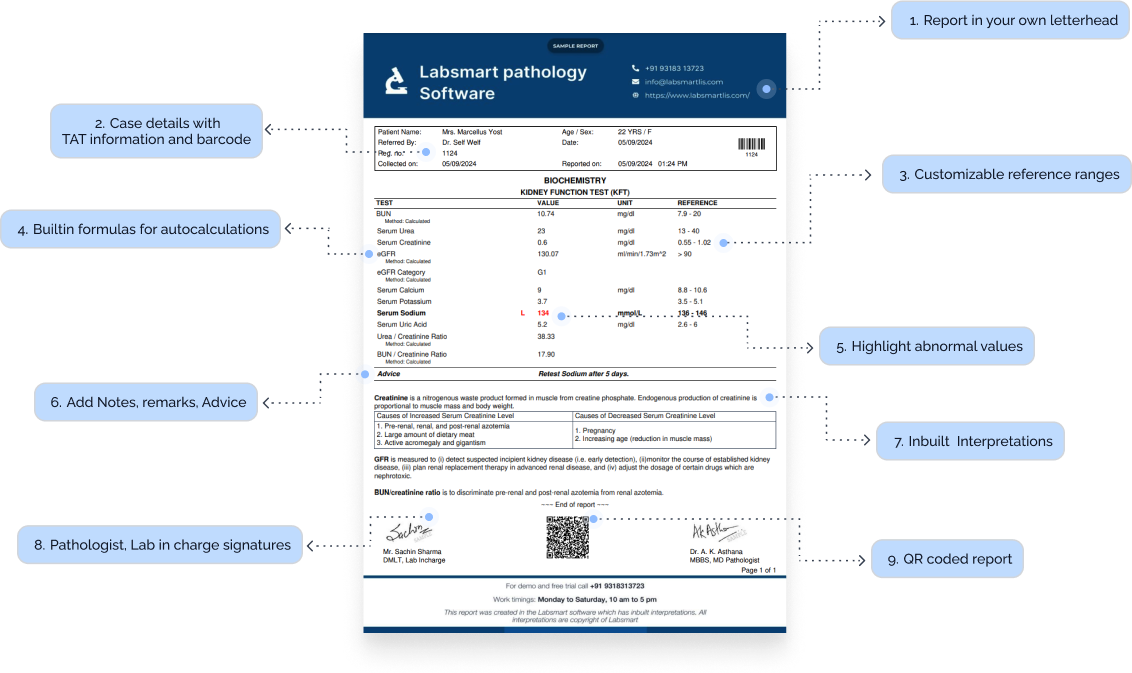
Join a free live demo now!
See all features live
Understand the benefits
Get your questions answered
No purchase pressure

What is Vitamin D3 ?
The Vitamin D3 test measures the level of 25-hydroxyvitamin D (25(OH)D), which is the form of vitamin D circulating in the blood. Vitamin D is essential for bone health, immune function, and overall well-being. The test specifically measures Vitamin D3 (cholecalciferol), which is produced in the skin in response to sunlight and can also be obtained through diet or supplements. Low levels of Vitamin D3 may indicate a deficiency, which can lead to various health issues. Clinicians may order a Vitamin D3 test to: Assess bone health: Vitamin D3 plays a crucial role in calcium absorption and bone mineralization, and low levels can contribute to bone disorders like osteoporosis, rickets, or osteomalacia. Evaluate risk for autoimmune diseases: Vitamin D deficiency has been linked to an increased risk of autoimmune diseases like multiple sclerosis, rheumatoid arthritis, and type 1 diabetes. Monitor conditions related to vitamin D deficiency: Such as chronic kidney disease, malabsorption disorders, or certain medications that interfere with vitamin D metabolism. Check for deficiency or insufficiency: Vitamin D3 levels can be checked in patients with symptoms like muscle weakness, fatigue, bone pain, or a history of fractures to determine if a deficiency may be contributing to their health issues.
Vitamin D3 Report Format: Breakdown
Here’s what an ideal Vitamin D3 report format should include:
Header Information:
- Patient Details: Full name, Age, Gender, and ID.
- TAT information: Timestamp for both sample collection and report generation.
- Doctor's Information: Name of the referral doctor, if applicable.
Test Results Section:
-
Patient's results
As obvious as it is, a test report should definitely have the patient's test result.
-
Result's Unit
The unit of the test result must be mentioned correctly in the report. Vitamin D3 test is generally reported in “ng/mL”
-
Vitamin D3 Normal Value / Reference Range
The report must have the normal Vitamin D3 range. It can differ slightly based on the reagents used by the lab and other internal factors, but common Vitamin D3 ranges are:
30 - 100
Interpretations
Nowadays, most labs prefer to add interpretations to the reports, making the report more patient-friendly. Labsmart software has interpretations of all routine test pre-filled in the software.
Footer Section:
-
Certifications:
Display any relevant accreditations (e.g., NABL, ISO), adding to your lab's credibility.
-
Pathologist and technician signature:
It's mandatory to add a Pathologist and technician signature to the report.
Vitamin D3 Interpretation
In Labsmart software, this is the inbuilt interpretation for Vitamin D3
Importance of adding interpretation to reports:
It's very helpful to add interpretation in reports as it makes the reports more patient friendly and also helpful to doctors in some cases. Moreover, presently most labs prefer providing reports with interpretation. Thus, adding interpretation to report will help your lab stay at par with other competitor labs.
Labsmart Pathology Reporting Software
(With Interpretation and auto calculations)
- Billing
- Reports with Interpretation
- Auto calculation where needed
- Check daily business
- WhatsApp reports

1.5 Crore+
Reports printed & delivered online
1250+
Labs Active
10+
Countries
Vitamin D3 MS Word format
Download the Ms word editable Vitamin D3 report format for offline reporting.
Download word format



















